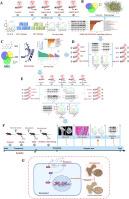Mangiferin reverses high glucose-induced osteoblast damage and ameliorates osteoporosis by targeting SOX9
IF 8.3
1区 医学
Q1 CHEMISTRY, MEDICINAL
引用次数: 0
Abstract
Background
Osteoporosis (OP), a systemic metabolic bone disease, severely threatens middle-aged and elderly populations. Diabetic osteoporosis (DOP) presents exacerbated challenges due to high-glucose (HG)-induced osteoblast dysfunction.
Purpose
To investigate protective effects of mangiferin on HG-induced osteoblast damage and elucidate its anti-OP mechanisms via SOX9 targeting.
Methods
In vitro: HG-damaged MC3T3-E1 osteoblasts treated with mangiferin (5–80 μM) were assessed for proliferation (CCK-8), oxidative stress (ROS/SOD/MDA), osteogenic differentiation (ALP/ARS), and signaling via network pharmacology/proteomics. Mechanistic validation: SOX9 siRNA knockdown and PI3K inhibition (LY294002). In vivo: Dexamethasone-induced OP mice administered mangiferin (100 mg/kg) were evaluated via Micro-CT, histology (HE), serum biomarkers (CTX-1/PINP), and molecular profiling (WB/RT-qPCR).
Results
Mangiferin significantly increases bone density and improves bone morphology in OP mice. Specifically, it enhances the expression of p-AKT, p-FOXO1, and SOX9 in osteoblasts. This effect is attenuated by the PI3K inhibitor LY294002 but potentiated by the AKT agonist SC79. SOX9 knockdown suppressed osteogenic genes, and mangiferin rescued this suppression, revealing SOX9 as a key downstream target of the PI3K/AKT/FOXO1 pathway in osteoblasts.
Conclusion
This study is the first to demonstrate that mangiferin activates the PI3K/AKT/FOXO1/SOX9 axis to reverse HG-induced osteoblast damage, providing a novel multi-target treatment strategy for DOP.

芒果苷通过靶向SOX9逆转高糖诱导的成骨细胞损伤和改善骨质疏松症。
背景:骨质疏松症(Osteoporosis, OP)是一种严重威胁中老年人群的全身性代谢性骨病。由于高糖(HG)诱导的成骨细胞功能障碍,糖尿病性骨质疏松症(DOP)提出了加剧的挑战。目的:探讨芒果苷对hg诱导的成骨细胞损伤的保护作用,并通过SOX9靶向机制阐明其抗op机制。方法:体外:用芒果苷(5 ~ 80 μM)处理hg损伤的MC3T3-E1成骨细胞,通过网络药理学/蛋白质组学检测细胞增殖(CCK-8)、氧化应激(ROS/SOD/MDA)、成骨分化(ALP/ARS)和信号转导。机制验证:SOX9 siRNA敲低和PI3K抑制(LY294002)。在体内:通过Micro-CT、组织学(HE)、血清生物标志物(CTX-1/PINP)和分子谱(WB/RT-qPCR)对地塞米松诱导的OP小鼠进行评价。结果:芒果苷显著提高OP小鼠骨密度,改善骨形态。具体来说,它增强了成骨细胞中p-AKT、p-FOXO1和SOX9的表达。这种作用被PI3K抑制剂LY294002减弱,但被AKT激动剂SC79增强。SOX9敲低抑制成骨基因,芒果苷恢复了这种抑制,揭示了SOX9是成骨细胞PI3K/AKT/FOXO1通路的关键下游靶点。结论:本研究首次证实芒果苷激活PI3K/AKT/FOXO1/SOX9轴逆转hg诱导的成骨细胞损伤,为DOP提供了一种新的多靶点治疗策略。
本文章由计算机程序翻译,如有差异,请以英文原文为准。
求助全文
约1分钟内获得全文
求助全文
来源期刊

Phytomedicine
医学-药学
CiteScore
10.30
自引率
5.10%
发文量
670
审稿时长
91 days
期刊介绍:
Phytomedicine is a therapy-oriented journal that publishes innovative studies on the efficacy, safety, quality, and mechanisms of action of specified plant extracts, phytopharmaceuticals, and their isolated constituents. This includes clinical, pharmacological, pharmacokinetic, and toxicological studies of herbal medicinal products, preparations, and purified compounds with defined and consistent quality, ensuring reproducible pharmacological activity. Founded in 1994, Phytomedicine aims to focus and stimulate research in this field and establish internationally accepted scientific standards for pharmacological studies, proof of clinical efficacy, and safety of phytomedicines.
 求助内容:
求助内容: 应助结果提醒方式:
应助结果提醒方式:


